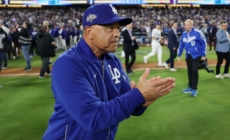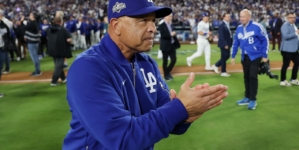-
Warriors Shockingly Cut Ties With Steph Curry’s Brother Ahead of Regular Season - 9 mins ago
-
Jeffrey Epstein’s Angry Emails to Billionaire Leon Black - 37 mins ago
-
Dave Roberts Sends Clear Message to Critics - 44 mins ago
-
Mom Has Two Boys, Tries for a Girl—Not Prepared for What Scan Reveals - about 1 hour ago
-
Israeli Military Fires On Vehicle, Saying It Crossed Cease-Fire Lines - about 1 hour ago
-
How to Watch Fulham vs Arsenal: Live Stream Premier League, TV Channel - 2 hours ago
-
Demonstrators Begin Gathering Across the Country for Protests Against Trump - 2 hours ago
-
Interstate 5 will close today through Camp Pendleton as military confirms it will fire artillery - 2 hours ago
-
How to Watch UConn at Boston College: Live Stream NCAA College Football, TV Channel - 2 hours ago
-
Relief and Grief: What Jewish New Yorkers Feel After the Hostage Release - 3 hours ago
Orionid meteor shower will be visible over L.A. How and when to watch
October is full of astronomical events, with a supermoon and dim meteor recently brightening the skies over Los Angeles. Next week, another is coming: the Orionid meteor shower.
The Orionid shower is made up of particles from Halley’s Comet burning in the atmosphere as Earth’s orbit intersects the comet’s path, according to NASA. This year, NASA says the view of the meteor shower will be “spectacular.”
The Orionid shower gets its name the constellation Orion, which it appears alongside. For stargazers wondering where to look, Griffith Observatory says to keep your eyes on Orion’s raised club.
When to see the meteor shower
Despite lasting until late November, NASA says the peak viewing days will be Monday and Tuesday. This is thanks to the new moon, which cuts down on natural light — though unfortunately not L.A.’s widespread light pollution. The darker the skies, the more visible the meteors will be to the naked eye.
Orionids are known to leave glowing trails that can last seconds or even minutes due to their astounding speed — 41 miles a second, according to the American Meteor Society.
They also tend to come from the southeast in the early morning hours, until about 2 a.m., according to NASA.
Where to see it
The flaming pieces of astral debris will be most visible away from light pollution, which affects much of Los Angeles.
However, L.A. County is home to stargazing spots that can provide ideal conditions.
L.A.’s most iconic lookout spot, the Griffith Observatory, may seem like an obvious option. However, space is limited as the observatory announced its public lawn will be closed until late November. The viewing deck will remain open and the main observatory closes at 10 p.m.
Malibu Creek State Park is a popular option with both isolated campgrounds for serious stargazers and upper parking lot for more casual viewing. Topanga State Park is another option in the Santa Monica Mountains with little light interference.
Turnouts along Templin Highway and the recently renovated Angeles Crest Highway in the Angeles National Forest are another option.
For Angelenos up for a longer drive, Anza-Borrego State Park is a designated dark sky zone and Joshua Tree National Park is famous for stunning night sky views. Both locations are about two and a half to three hours from downtown L.A., depending on traffic.
No matter where you look from — even your own backyard — patience is essential. While the cadence of meteors varies, a normal year produces around 10 to 20 shower members per hour, according to the American Meteor Society, so settle in and get comfortable.
Source link




















